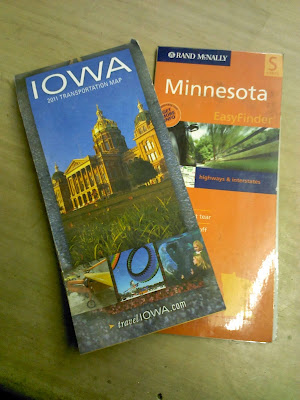Preparedness on the Cheap: Learning Your Evacuation Routes
No one wants to think about evacuating their home. I know I would not leave mine until I absolutely had to or was forced to leave. However, in being prepared, we have to think about all possibilities whether we want to or not.
I live in a rural area. I know my evacuation routes by heart. I have them marked on a map that is always in my vehicle. I carry maps of Minnesota and Iowa because those are the two areas I travel the most in. I know the main routes and the alternate routes by heart. I have routes that miss all towns/cities, but can always go into a town if I need to.
While I find this important in rural areas, I find having evacuation routes crucial in urban areas. When I find myself in a town or a city, I look at maps to make sure I know how to get out of town. Main roads are good, but might be clogged with other traffic trying to leave. I look for alternate routes and I also try to make sure I have contacts that live or work in that city for more information on ways to leave the city.
Another thing I do to learn my evacuation routes is to also learn landmarks. I will talk to myself when I am drive and tell myself the landmarks. I try to memorize these landmarks so if I don’t have a map or I am not using my vehicle, I can still know where I am going.
Things You Will Need To Learn Your Evacuation Routes
1. Highlighter or Marker, Pen, and Paper
2. City Map
3. County Plat Maps (If you can get them. Not every state or county has these.)
4. State Map with county paved roads marked on them
5. Atlas with primary and secondary roads marked on them
6. A vehicle in which you can travel your routes.
How To Learn Your Evacuation Routes
1. Decide where you are going. I talk more about this here. Make sure your routes are highlighted.
3. Take a drive. If you have time and gas money, drive your primary and alternate routes. Start noting your landmarks and where they are at. If you have passengers with you, this would be a good task for a passenger to do. Stop every twenty miles or so if you are by yourself and write down the landmarks.
4. Drive back home. Do the same thing as #3, but in reverse. You might notice different landmarks on your way back home.
5. Once home, type up your evacuation routes as well as a list of landmarks in order of being seen. Also, type your evacuation routes in reverse in case you need them to get home. Put these in every vehicle as well as your bug out bags so you have them handy when you need them.
6. Update these at least once a year. New roads are being added all the time and sometimes your evacuation plans need to change.
I know we have GPS, Google Maps, and other such things nowadays. I don’t like using any of those things. You know why? Nothing, and I mean nothing, replaces map-reading knowledge, memorization, and good common sense. Those electrical things can fail, die, run out of battery, or simply not be available when you need them. Do not rely on them.
Involve your kids in finding your evacuation routes. If they are drivers or college kids, they need to know this information. You might need another driver in case of emergencies, need of second evacuation vehicles, or injuries. Your college kids need to know how to get back home safely using multiple routes.
Make this an family effort. You never know what your kids need to know and when they need to know it. They might have a better idea than you on getting somewhere fast. And it never hurts to have a second, third, or fourth pair of eyes either.
In the winter, this is a good task to have done in a weekend. Whenever you do it, do it as soon as you can. You never know what you will face today or tomorrow.
Thanks for reading,
Erica

